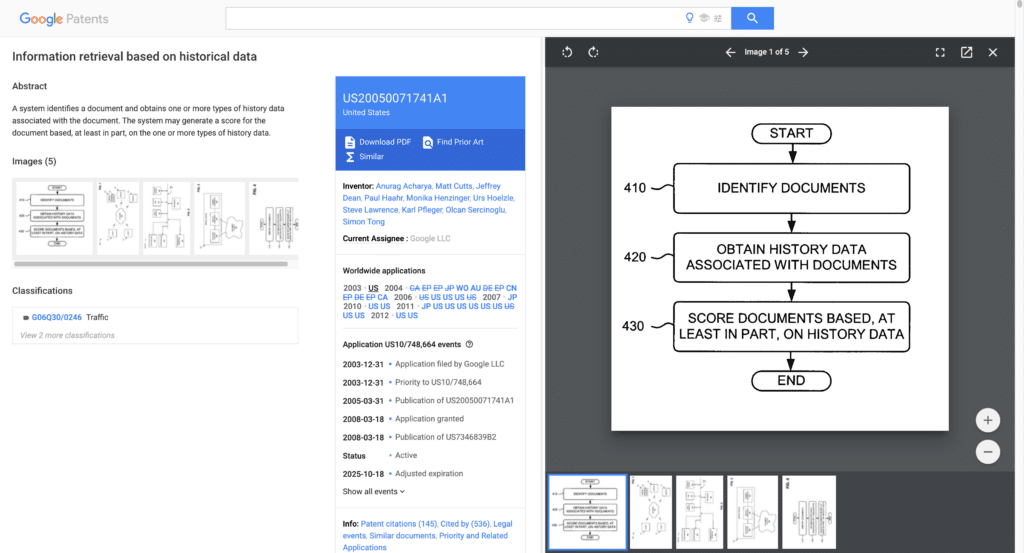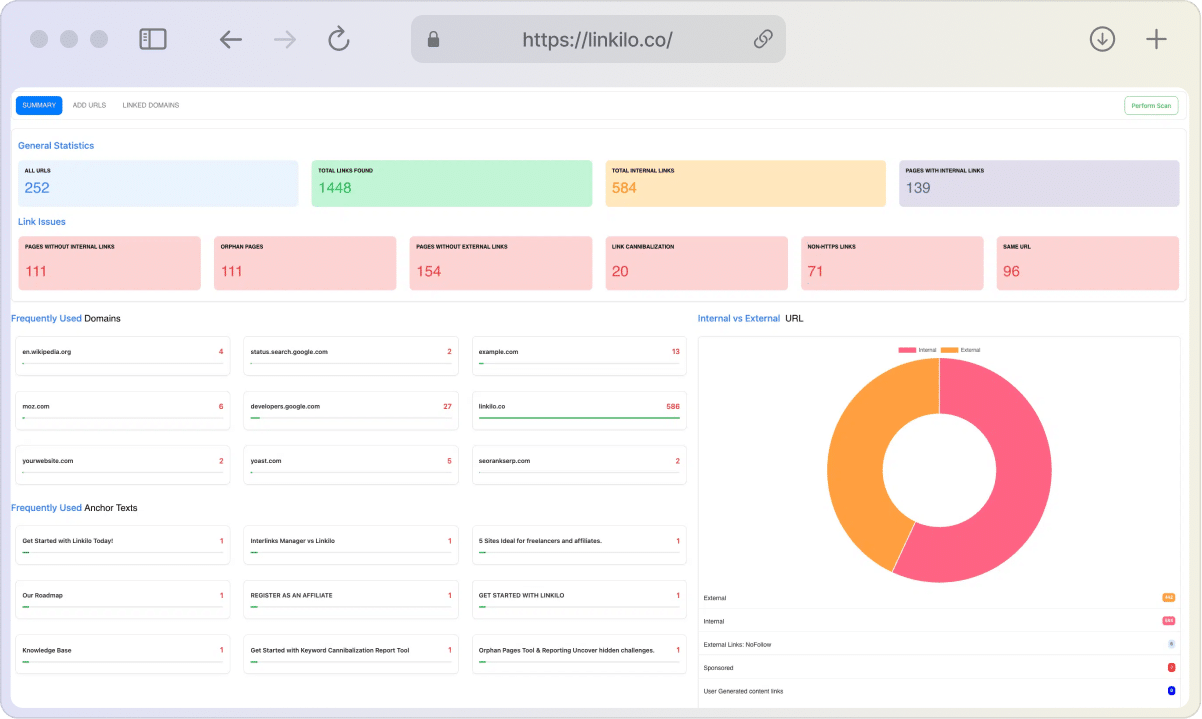Link stability, the duration for which outbound links remain unchanged on a webpage, has been a topic of debate among SEO professionals. This concept gains significance in light of a Google patent filed in 2005, focusing on “link churn” – the frequency of changes to these links.
This article aims to dissect the concept of link stability, tracing its origins, examining the claims and evidence surrounding its impact on Google’s search rankings, and providing a clear understanding of its current relevance.
What is Link Stability?
Link stability refers to the duration that outbound links on a website remain unchanged. It encompasses the constancy of URLs and the anchor texts associated with these links.
In SEO, link stability is thought to signal a website’s reliability and authority. Consistent links are sometimes perceived as indicators of a site’s credibility and trustworthiness.
How Link Stability Works
Link stability is based on the premise that search engines, like Google, track how often and to what extent the outbound links on a webpage are modified.
Search engines might analyze changes in links to evaluate the site’s stability. Frequent changes might be interpreted as instability, potentially affecting the site’s perceived authority.
The difference between link stability and link churn
“Link stability” and “link churn” are two concepts in SEO that, while related, have different implications:
- Link Stability:
- Definition: Link stability refers to the consistency of outbound links on a webpage over time. It is the measure of how long links remain unchanged on a site.
- Implications: A high level of link stability suggests that a website maintains a steady set of outbound links without frequent alterations. This can be interpreted as a sign of a reliable and stable website, which may convey trustworthiness and authority.
- SEO Perspective: While it’s speculated that link stability could positively impact a site’s SEO, current understanding suggests that its direct influence on search engine rankings might be minimal. Instead, its primary value may lie in enhancing user trust and site credibility.
- Link Churn:
- Definition: Link churn is the frequency with which the outbound links on a webpage are altered. It measures how often links are added, removed, or modified.
- Implications: High link churn indicates frequent changes in the outbound links of a website. This could be perceived as a lack of stability or consistency, potentially signaling to search engines that the site is less reliable or authoritative.
- SEO Perspective: The concept of link churn gained attention from a Google patent filed in 2005, suggesting that excessive link churn might negatively impact a site’s search rankings. However, it’s important to note that the current SEO practices and Google’s algorithms have evolved, and the exact impact of link churn on rankings today is unclear.
In summary, link stability is about the duration for which links remain unchanged, suggesting reliability, while link churn is about the frequency of changes to those links, which can imply instability. Both concepts are part of a larger discussion in SEO about how the management of outbound links can affect a site’s search engine performance and user perception.
Impact of Link Stability
While it was once speculated that high link stability could positively influence search engine rankings, recent understanding suggests that its impact might be minimal or non-existent.
Beyond search rankings, stable links can enhance user trust. Users might view a site with consistent and reliable links as more authoritative.
Example of Link Stability in Ecommerce
Imagine an ecommerce site specializing in electronics. It consistently links to product pages, manufacturer information, and reviews. Over time, these stable links reinforce the site’s reliability and user trust.
If the site rarely changes these links, except for necessary updates like new product launches or updated models, it demonstrates a commitment to providing current and relevant information, enhancing its credibility and possibly aiding in better search engine visibility.
Example in a News/Affiliate Website
For a news or affiliate website focusing on travel, maintaining stable links to recommended hotels, travel gear, or destination guides is crucial. Link stability here implies a consistent endorsement of these recommendations, suggesting thorough vetting and confidence in the provided resources.
Regularly changing these affiliate links could signal uncertainty or a lack of thorough research, potentially diminishing user trust and impacting the site’s authority in the eyes of both users and search engines.
Historical Context: Google’s Patent on Link Churn
Google’s 2005 patent brought the concept of link churn into the spotlight. The patent described a method for adjusting a site’s ranking based on the detected link churn, suggesting that high churn might lead to lower rankings.

The patent proposed evaluating link churn by assessing the frequency of link and anchor text changes. If the churn exceeded a certain threshold, it hinted at possible penalization. This raised questions about the necessity of maintaining link stability for better search rankings.
Analyzing Claims and Evidence
Since the patent’s discovery, there’s been widespread speculation that link stability is a key factor in Google’s ranking algorithms. The idea that maintaining unchanged outbound links could positively influence rankings has been debated in SEO circles.
However, the current version of the patent no longer references link churn. This absence, coupled with Google’s history of transparent communication regarding ranking factors, suggests that link stability might not be as crucial as once thought.

Current Understanding of Link Stability
Despite the initial buzz around the patent, there’s a consensus in the SEO community that link stability isn’t a significant factor in Google’s current algorithms. This view is supported by the lack of recent references to link churn in Google’s communications and the absence of penalties for sites that routinely update outbound links.
SEO practitioners should feel comfortable updating links as necessary. The focus should be on providing high-quality, relevant content rather than fixating on the stability of outbound links.
Conclusion
- Final Thoughts: The concept of link stability, while intriguing, does not hold the same weight in today’s SEO strategies as it might have in the past. The evolution of Google’s algorithms towards more content-centric and user-focused metrics reduces the emphasis on technical aspects like link churn.
- Moving Forward: SEO experts and website owners should prioritize creating and maintaining high-quality, informative content. This approach aligns with Google’s current emphasis on content relevance and user experience over technical link metrics.
- Innovative Example: Consider a hypothetical blog focused on health and wellness. If it frequently updates outbound links to the latest research or changes anchor texts to better reflect content updates, this should not negatively impact its search rankings. Instead, such updates can enhance the user experience by providing the most current and relevant information.




